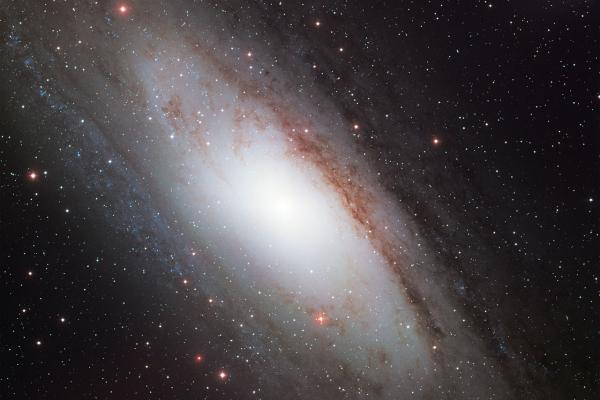
Title: The Thick Stellar Disk of Andromeda and the Discovery of a Weak CN Spectral Absorption Feature in Red Supergiants in the Local Group
Speaker: Puragra Guhathakurta (UC Santa Cruz)
Abstract:
I will discuss three independent lines of evidence that point to M31's stellar disk being thick: (1) the observed trends in extinction and reddening of red giant stars by the thin layer of interstellar dust indicate that the stellar disk is geometrically thick, with a scale height of ~ 1 kpc; (2) red giant stars in the disk are observed to have a high line-of-sight velocity dispersion (~ 50–70 km/s); and (3) the observed chemical abundance trend in [alpha/Fe] vs. [Fe/H] space is similar to that of the MilkyWay thick disk, not the Milky Way thin disk.
Time permitting, I will also discuss the recent discovery of a weak CN (cyanogen) spectral absorption feature at optical wavelengths (~ 8000 Angstrom) in the atmospheres of red supergiant stars (in the mass range 5–15 Msun). The weak CN feature is 6–7x weaker than the corresponding feature in carbon stars. We first discovered this spectral feature in M31 red supergiants, but have since identified it in M33 and the LMC red supergiants as well. Betelgeuse in the Milky Way also shows this feature. The astrophysical origin of the weak CN spectral absorption feature is not known at this time.
